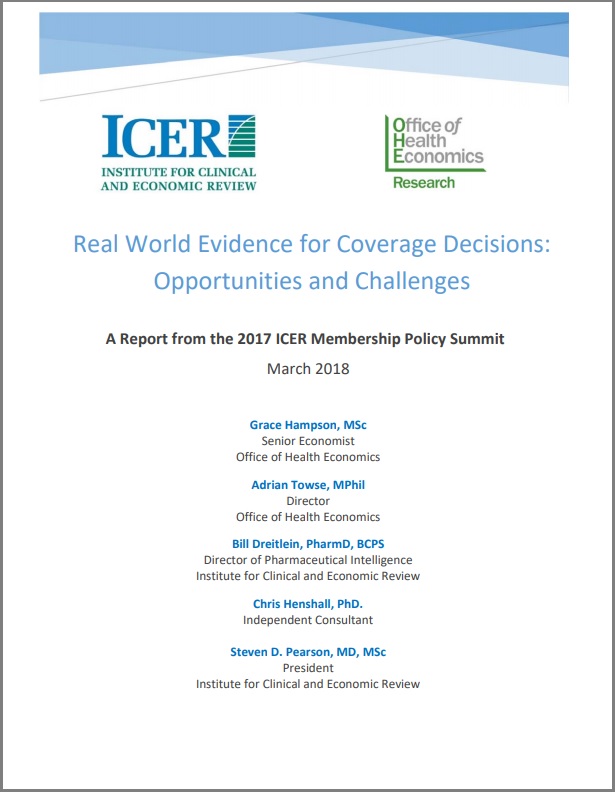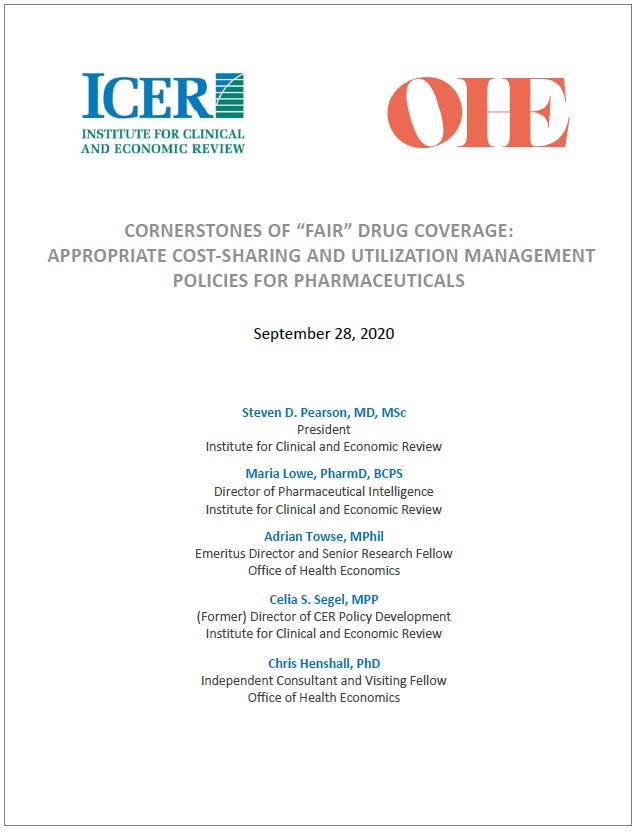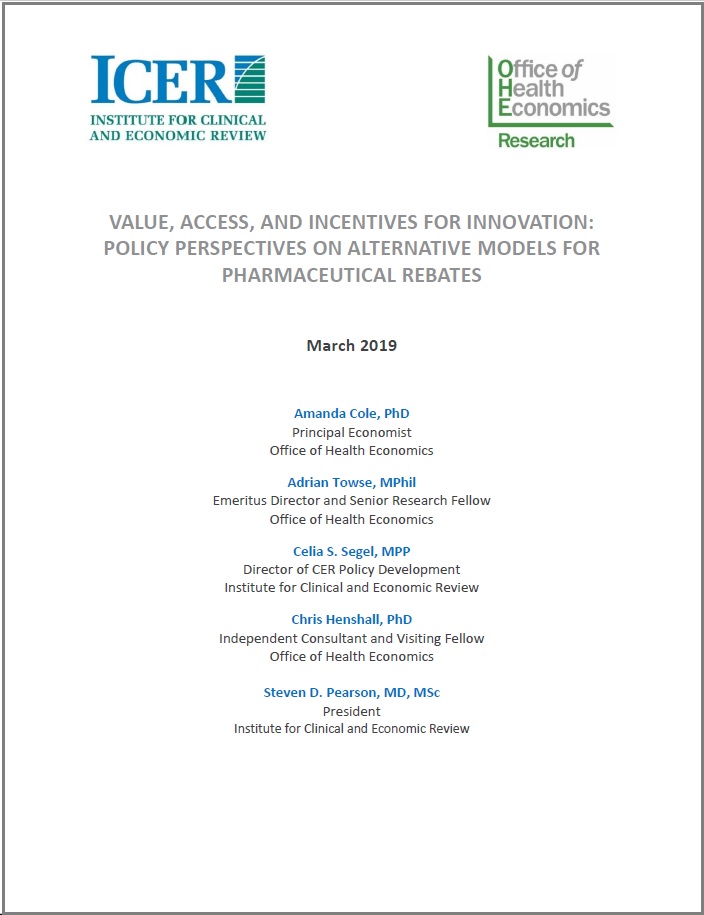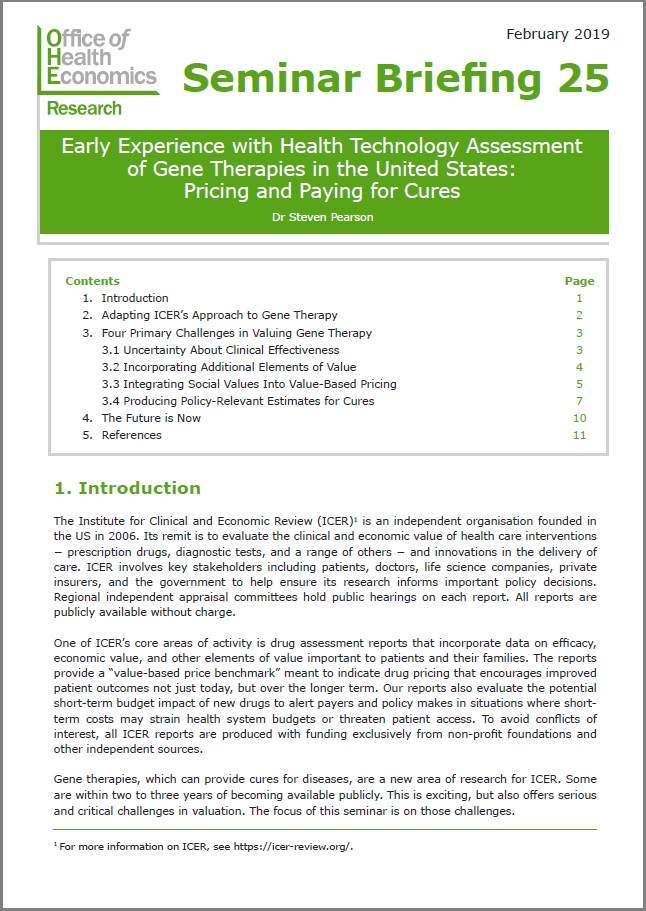Real World Evidence for Coverage Decisions: Opportunities and Challenges
OHE Research Paper 18/01: This paper sets out the potential opportunities and important challenges and limitations that must be addressed in considering options for using RWE to inform insurer coverage decisions. The primary purpose of developing the paper was to stimulate discussion at the 2017 ICER Policy Summit meeting. A separate paper is available that summarises the authors reflections and proposed ways forwards based on the discussions that were had at the meeting.
OHE Research Paper 18/01: This paper sets out the potential opportunities and important challenges and limitations that must be addressed in considering options for using RWE to inform insurer coverage decisions. The primary purpose of developing the paper was to stimulate discussion at the 2017 ICER Policy Summit meeting. A separate paper is available that summarises the authors reflections and proposed ways forwards based on the discussions that were had at the meeting.
OHE Research Paper 18/01: This paper sets out the potential opportunities and important challenges and limitations that must be addressed in considering options for using RWE to inform insurer coverage decisions. The primary purpose of developing the paper was to stimulate discussion at the 2017 ICER Policy Summit meeting. A
separate paper is available that summarises the authors reflections and proposed ways forwards based on the discussions that were had at the meeting.
RWE is already utilised for multiple purposes in the US and globally. The focus of the 2017 ICER Policy Summit was on RWE for HTA assessments and payer coverage decisions – both initial decisions and reassessments – and the majority of the paper focuses on this.
Acceptance of an expanded future role for RWE is not universal, particularly if it is seen as reducing the amount of RCT evidence available. Among the challenges associated with RWE explored in this paper are: bias and confounding; incomplete data; data mining; access to data; and the lack of universally accepted methodological standards.
Current uses of RWE can be strengthened by increasing the quality and credibility of RWE (via national registries, data repositories and strict protocols) and establishment of appropriate governance arrangements.
Key opportunities for the future include use of innovative study designs that combine benefits of collecting data from real world settings while incorporating best practice methods (i.e. randomisation methods from traditional RCTs); real time monitoring of patients; and the development of adaptive regulatory pathways linked to coverage with evidence development.




